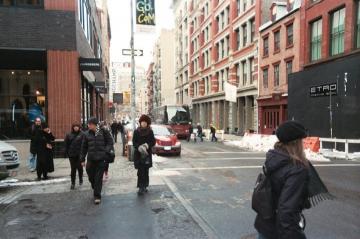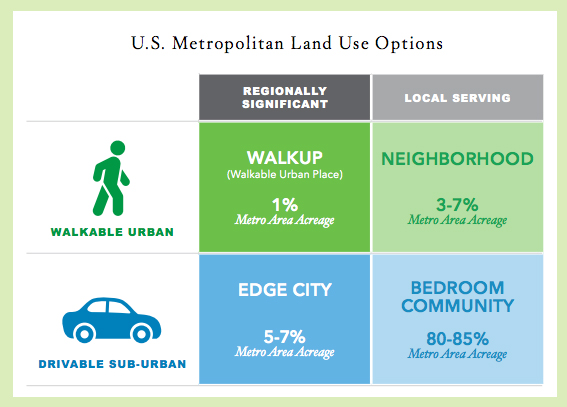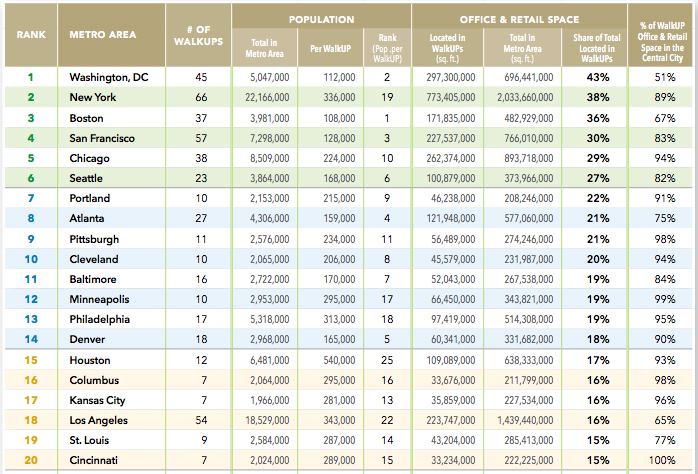A city's pedestrian-friendliness impacts its economy, according to a report done by Christopher Leinberger and Patrick Lynch of the Center for Real Estate and Urban Analysis at George Washington University School of Business.
According to the report, walkable communities have a higher GDP, greater wealth and higher percentages of college grads (see table below). Moreover, there is a “74 premium in rent per square foot in office buildings in walkable areas.”
And the report is not only talking about cities. According to Leinberger, the traditional dichotomy of “walkable urban” and “drivable suburban” is falling out of use. Many urban areas are car-oriented and many suburbs are developing into walker-friendly spaces.
Currently, the top five cities based on the percentage of their "WalkUPs" (walkable urban places) from the total metro area and population are Washington, D.C., New York, Boston, San Francisco, and Chicago.
Click here to read the whole report and learn more.
Screenshots from Foot Traffic Ahead report
© The George Washington University School of Business 2014
Related Stories
| Oct 27, 2011
ASSA Abloy, MAXXESS Systems announce U.S. Aperio integration
Aperio will integrate with MAXXESS's eAXxess and Efusion Event Management Software packages.
| Oct 26, 2011
Metl-Span selected for re-roof project
School remained in session during the renovation and it was important to minimize the disruption as much as possible.
| Oct 26, 2011
Shawmut Design and Construction awarded Tag Heuer build in Aventura, Fla.
New store features 1,200 sf fit out at Aventura Mall.
| Oct 25, 2011
HKS Science & Technology practice formed
Specializing in the planning and design of highly technical building types, HKS’s Science & Technology practice offers the broadest range of services available to the academic and biomedical research, biotechnology, pharmaceutical and medical device community, including laboratory programming, planning and design, strategic science planning and laboratory equipment planning.
| Oct 25, 2011
Universal teams up with Earthbound Corp. to provide streamlined commercial framing solutions
The primary market for the Intact Structural Frame is light commercial buildings that are typically designed with concrete masonry walls, steel joists and steel decks.
| Oct 25, 2011
Ritner Steel CEO elected to AISC Board
Freund will begin serving on the AISC board of directors, assisting with the organization's planning and leadership in the steel construction industry.
| Oct 25, 2011
Commitment to green building practices pays off
The study, conducted by the Pacific Northwest National Laboratory, built on a good indication of the potential for increased productivity and performance pilot research completed two years ago, with similarly impressive results.
| Oct 25, 2011
DOE issues report on financing solar photovoltaic systems for K-12 schools
The report examines the two primary types of ownership models used to obtain solar installations. This analysis can help school administrators across the country select the best option for deploying solar technologies in their school districts.

















